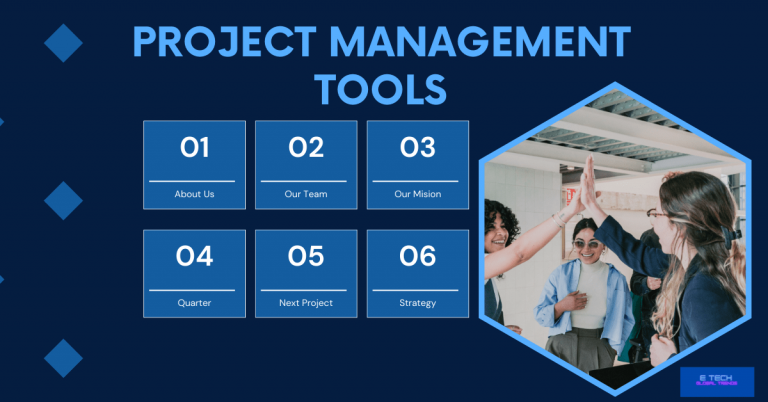Semantic Layer
As a business intelligence tool, Semantic Layer has a significant role. An overview of intricate data sources is given by a data model known as the semantic layer. By acting as a bridge between the end user and the data source.
it creates a common language that can easily understand by both. This eliminates the need for certain knowledge or abilities, making it simpler for non-technical individuals to access and interpret data.
Business intelligence tools called semantic layers offer a streamlined perspective of intricate data sources.
How does semantic layer work?
More specifically, the technology facilitates large data access and analysis for non-technical people.
A retail company, for instance, can have a lot of data spread across several inventory management systems.
The absence of a semantic layer would require a user to obtain the required information by comprehending the underlying query languages, database structures, and system relationships.
Who gets the benefits of this technology?
Many users are not technical ones.
so, Non-technical users may;
- traverse the data,
- choose pertinent dimensions and metrics,
- apply filters, and
- create reports with the help of a semantic layer.
Business users who can access and evaluate data on their own, without the assistance of IT or data specialists, are the advantages to as having self-service business intelligence (BI).
We hope to add some deeper information in this matter.
How does users get benefits for Semantic Layer when they come in Business intelligence?
Through the provision of a streamlined and user-friendly representation of data, the semantic layer for business intelligence (BI) significantly contributes to the benefits that users receive. Users can gain insight into the semantic layer in the following ways:
1. Easier Access to Data
The database schema and underlying data structures don’t need to be fully understood by users. Users can access and manipulate data more easily because the semantic layer simplifies the intricacy of the data model.
2.Terminology Suitable for Business.
Key performance indicators (KPIs), client segments, and other business-friendly language can use. thanks to the semantic layer. In their particular business environment, this enables users to link to what they know in a meaningful way.
3.Consistent Definitions
The semantic layer makes sure that definitions and computations are done consistently throughout the company. By guaranteeing that everyone is operating with the same set of guidelines and measurements, this helps to prevent disparities in interpretation and reporting.
4.Data Governance
The semantic layer offers a defined and centralized layer for establishing and administering security protocols, business rules, and metadata, which helps to improve data governance. This guarantees the controlled and compliant use of data.
5.Self-Service BI
Users don’t need to rely as much on IT teams to complete self-service BI tasks. Business users may now develop dashboards, reports, and analytics without requiring a high level of technical expertise thanks to the semantic layer.
6.Improved Performance
Users can benefit from enhanced query performance through semantic layer optimization of queries and aggregations. By pre-aggregating data and caching commonly used queries, the semantic layer helps speed up information retrieval.
7.Adaptability to Change
The semantic layer offers an abstraction level that facilitates adaptation without interfering with end-user workflows if business requirements or data sources change. This flexibility is essential in fast-paced work settings.
8.Improved Data Integration
The semantic layer facilitates the smooth integration of data from various sources. Through a single interface, users may access data from multiple databases, apps, and systems without needing to grasp the specifics of each source.
Why Semantic Layer in BI is going to be a revolution?
In the semantic layer, consumers can establish validations and criteria for data quality, which helps to guarantee the accuracy and dependability of the data being studied. confidence in the data & the ensuing insights is bolstered by this.
To sum up, the semantic layer within business intelligence acts as a liaison between business users and technical data structures, offering a controlled, standardized, and intuitive environment for gleaning insightful insights from data.
What are the advantagesof semantic layer?
In this section we ‘ll explain the valuable functions of this tech.
1.0 Self-serve analytics.
It is a useful facilitator of analytics self-service that strikes a balance between control and agility.
2.0 Easy integrating.
Data can be integrated with many file formats and data repositories, increasing its standardization and accessibility.
3.0 The Efficiency of Development
By facilitating the creation of abstractions, definitions, metrics, as well as measures as well as integration with several data sources, it makes development effective for technical experts and manageable for citizen developers.
4.0 Centralized upkeep.
It can be managed by an analytical development team or central data management, guaranteeing control, consistency, and reliable data delivery.
5.0 Making Use of Current Technology and Skill Set.
Because it makes use of current architecture, technology, and internal expertise, constructing a semantic layer at the edge of the data layer is an affordable implementation choice.
What are the types of Semantic Layer?
A key element in the fields of business intelligence and data analytics is the semantic layer.
Users will find it easier to comprehend and work with the data as a result of its ability to abstract & simplify the complexities of underlying data structures.
There are various kinds of semantic layers, therefore different BI systems may use different terminology.
Here are a few typical kinds:
We’ll state in easy catchable format in order to understand well.
1.Level of Business Semantics
This is what our topic and most popular area. Business terms and concepts are the main topics of this layer.
Removes technical specifics to present the facts in a way that is focused on business.
Facilitates communication between non-technical and technical users.
2.Metadata Layer
Data describing the relationships, structure, and content of the data are stored in this layer.
Without physically engaging with the data sources, users can still examine and comprehend the data.
3.Semantic Layer Based on Ontology
Ontologies are employing in certain sophisticated systems to specify the connections and interpretations of data. Ontologies provide knowledge with a formal representation and can be utilized to deduce more details.
4. Relational Semantic Layer
The ideas of relational databases form the foundation of this layer.
The fundamental data structure is there to represent tables and relationships that will make the definition.
A user’s engagements across the semantic layer are frequently use to produce SQL queries.
5.The Multidimensional Semantic Layer
This is intended for;
- OLAP-Online Analytical Processing systems.
- Cubes,
- dimensions, &
- measures
are among the ideas it covers.
6.The Federated Semantic Layer
This is the 6th layer that combines information from several dispersed sources.
Data from several databases or systems can be accessed and queried by users as though it were coming from a single, cohesive source.
- Drill-downs,
- roll-ups, and
- pivot tables
are tools that users can use to evaluate data.
7.User-Defined Semantic Layer
Users can create bespoke semantic layers with certain BI products.
Data element relationships can be defined and custom business views can be created by users.
8.Web Semantic Layer
- RDF -Resource Description Framework
- SPARQL -PARQL Protocol and RDF Query Language
are two examples of technologies that may use in the context of the web and linked data.
various BI tools and platforms may use various terminology and semantic layer characteristics.
To accommodate a variety of user requirements and data sources, certain tools may include several kinds of semantic layers.
Is Semantic Layer trending?
When analyzing recent facts, it’s looks like. Enterprise data volume has increased by almost 100% since 2020. Additionally, by 2031, there will be 36% more employment requiring data science expertise.
For this reason, companies are starting to explore for other ways to use their data beyond hiring data scientists.
Independent contractor BI is starting to show promise as a remedy for this issue.
What is the technological view of Sememntic Layer?
The core component of the new Web 3.0 stack, the semantic layer aims to give the data over the web more context. This layer makes it possible for machines to comprehend the context as well as connections between data by utilizing technologies like;
- the Web Ontology Language (OWL)
- the Resource Description Framework (RDF).
So, more pertinent search results may be produced.
for instance, if a search engine that leverages the semantic layer may identify the connection between an individual’s first name and email address.
What is the structure of a data platform?
Many critical variables must be considered for an effective data platform organization. Below is a comprehensive guide on how to build up a platform for data using the provided information:
1.0 Data Processing and Storage
Choose the best storage option for your data, taking performance, security, and scalability into account. Depending on your unique requirements, select technologies like distributed file systems, databases, and cloud-based storage systems.
2.0 Ingestion of Data
Provide systems for gathering and incorporating data into your data platforms from diverse sources. To effectively extract and load data, this may entail utilizing connectors, APIs, various data integration technologies.
3.0 Data Transformation & Modeling
Create procedures for converting unstructured data into a format that can be analyzed. This could entail building data models or schemas, normalizing, enriching, and purifying the data.
4.0 Semantic Layer
Take into account developing a semantic layer to offer a uniform perspective of data throughout the company. It facilitates the establishment of uniform metadata, governance guidelines, and semantics to improve data integration and sharing.
5.0 Business intelligence (BI) & analytics
Combine technologies and tools to carry out reporting, data visualization, and analysis. Users can obtain insights and arrive at data-driven decisions with the help of this layer.
6.0 Data Observability
To guarantee data accuracy, dependability, and consistency across time, use monitoring, validation, and standard assurance procedures.
This aids in maintaining data quality, detecting abnormalities, and locating problems with the data.
7.0 Data Discovery
Use metadata management, data cataloging, and search capabilities to make data discovery easier. Users may now locate and comprehend available data assets with ease thanks to this.
Is power BI solotion reliable?
Within Power BI, a semantic layer serves as a logical layer that deconstructs complex data and specifies the relationships, computations, and hierarchies required for data interpretation. There is a data model layer and a technical implementation layer.
Is semantic layer and semantic model same?
A Good question.
Although they relate to distinct aspects of data as well as information systems, the phrases “semantic layer” as well as “semantic model” are not the same.
1. Semantics Layer
Semantic warehousing and business intelligence are frequently links to the semantic layer. It is an abstraction layer lacing between end-user reporting tools or apps and the actual data storage (databases).
The semantic layer’s goal is to offer an intuitive user interface for data analysis and querying. Users can engage with data using concepts and language that are familiar to them in the business world, while the intricacies of the underlying data structures are abstracted away.
The semantic layer in the context of business intelligence (BI) tools and related technologies consists of definitions, business rules, and metadata that facilitate user comprehension and manipulation of the data.
2. Semantic Model
A semantic model is a more general term that can be used to describe distinct meaning representations in different areas.
A semantic model is a representation of the purpose or semantics of data with databases and data.
Semantic models are conceptual representations of data in the area of information technology that frequently make use of entities and relationships between them. It captures the context and meaning of the data in addition to the physical data structure.
- Natural language processing,
- knowledge representation,
- database design, and
- other fields all make use of semantic models.
In conclusion, although the semantic layer in the context of BI and data warehousing is particularly links to the abstraction as well as simplifying of data for user interaction, a semantic model is a more general term that can apply to representations of meaning in a variety of domains, which is not exclusive to data and databases.
The Methodology of Semantic Model Construction.
Power BI’s semantic model creation procedure is a methodical approach that guarantees the model appropriately represents your data and satisfies user requirements.
This is a condensed manual for creating a successful semantic model:
1.0 Choose Your Model’s Data Sources:
Select Excel files,databases, or other external sources as your starting point.
2.0 Import Data or Link to Data
Import data toward Power BI or establish a connection to an external source. Power BI has various methods for doing this, so you may select the one that best suits your needs.
3.0 Clean & Transform Data
Ensure that the data you have is both valuable and clean. This could entail removing duplicates, adding missing values, or using computations to create new columns.
4.0 Establish links between the tables in your data by setting up relationships.
Users may now navigate and evaluate relevant data more easily as a result.
5.0 Make Measures and Calculations
Make measurements and computations that provide insightful information. These could be totals, averages, or special computations for your industry.
6.0 Establish Hierarchies
To enable consumers to delve more into the data, create hierarchies. Through the exploration of many degrees of information, hierarchies provide a more in-depth perspective.
7.0 Validate and Test
Use some example queries and visualizations to test your model. This is an essential step to ensure that everything functions properly and that the results are precise.
Summary
The translation layer that stands between business users and data is called a semantic layer. It translates intricate data into comprehensible business language.
It controls how different data attributes relate to one another to produce a straightforward and cohesive business perspective.
Hope this content helps.
Cheers!
Read more on related topics here; Power BI, Business Analitics, Bsuness managemnet software







